How interesting would be to be able to move someone else’s hand? Turns out scientists can do this with the use of an electrical current. A recent paper published this month in the Scientific Reports of Nature Research shed some light on the parameters of the Transcranial Random Noise Stimulation - tRNS technique. In the past years, researchers worldwide have been using stimulation techniques that involve passing a small electric current through the head of the participant. tRNS has been promising in the investigation of motor, sensory and cognitive tasks but the way it operates was still very uncertain. Now scientists from the University of Padova in Italy, demonstrated that using a wider range of a high-frequency band is more effective than using narrower ones.
The protocol for most tRNS studies was using a specific frequency range, and not other narrower subranges. “We decided to test if we could increase the brain excitability by using smaller scopes, these being 100-400Hz and 400-700Hz, while also testing a wider range of frequency similar to the protocol: 100-700Hz”, Rita Donato added, one of the study authors and current researcher at the Proaction Lab in University of Coimbra.
The study collected data from 14 female students that had their motor cortex stimulated. When the electrical current passes in this region of the brain there is a direct involuntary effect on the muscles of the subjects’ hands. To enhance the excitability, they used a non-invasive device that generates magnetic fields. The generated hand’s movement was recorded and then the data was analysed. “We realized that a wide frequency range seems to yield a more pronounced effect”, Rita Donato explained. “Dividing the frequency current into subranges wasn’t effective”.
The difference of tRNS from other electrical stimulation techniques is that the electrical current runs in random frequencies, which means that although the range is controlled and is known, the brain cannot “predict” the order of the frequencies and doesn’t adapt to them. “A good example to explain the phenomenon is comparing to when you smoke”, said Rita Donato. “The first cigarette has a greater effect because you haven’t smoked for a while, but after two months of smoking, you don’t feel the cigarettes’ effect as much”. According to the PhD student, the same thing happens with the brain, that is, if you stimulate the brain with the same frequency it adapts to it, thus, a random frequency system works in a non-expectable way.
The application of some of these techniques is already happening for patients with motor and mental disorders, but further research is still necessary in order to use tRNS in clinical projects. “Our findings brought some awareness and I think in science things should be explained”, the researcher added. The study was done with a high-frequency band. Next step should be to do the study with a low-frequency band and see if it is possible to obtain similar results.
Currently, Rita Donato is focused on studying the areas of the brain that show activity when we see tools and hands. In order to achieve this, she is using neuroimaging and a different electrical stimulation technique.












